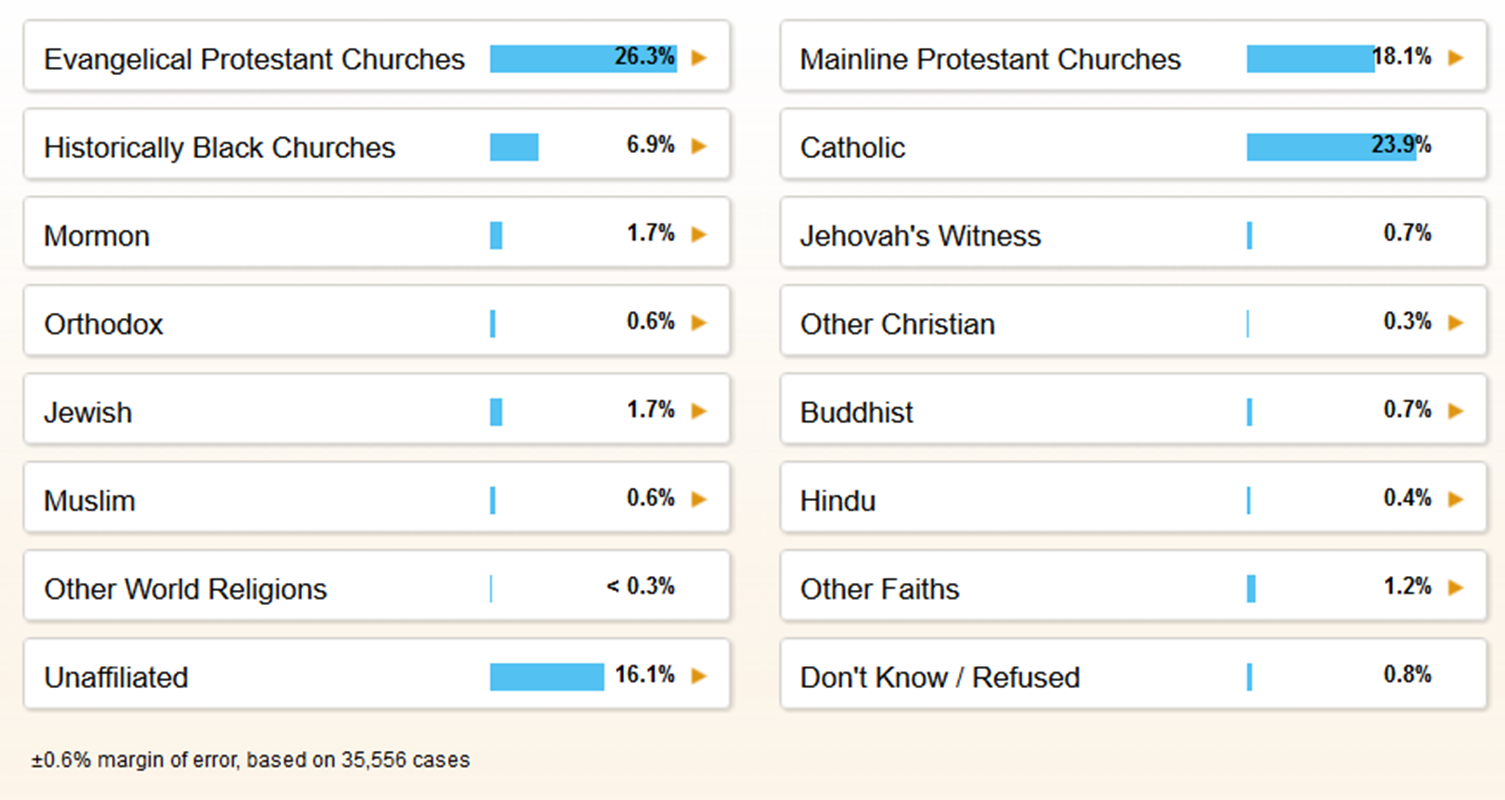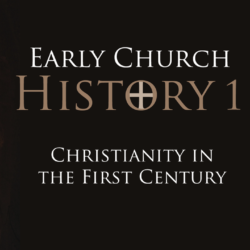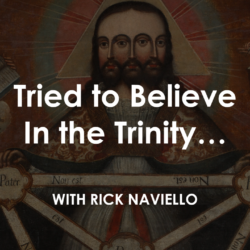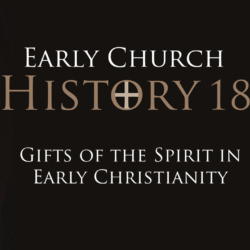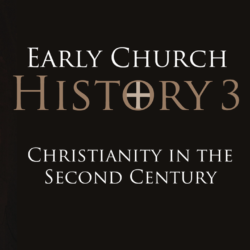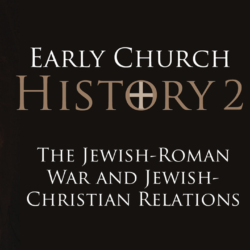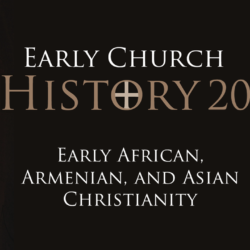In this last episode of our 500 class, we’ll cover a bunch of 20th century American groups including Christian Science, the Evangelicals, Plymouth Brethren, Pentecostals, Calvary Chapel, Vineyard Churches, Christian and Missionary Alliance, the Way International, the Worldwide Church of God, Scientology, the Moonies, and Megachurches (Rick Warren, Craig Groeschel, and Joel Osteen). It’s a whirlwind, but it should aid you in making some interesting and helpful connections between present day Christian groups and their past.
This is lecture 15 of a history of Christianity class called Five Hundred: From Martin Luther to Joel Osteen.
All the notes are available here as a pdf.
—— Notes ——
Christian Science (a.k.a. Church of Christ, Scientist) (85,000)
- 1866 – Mary Baker Eddy (1821-1910) experienced healing from back pain after studying the Gospels and devoted her life to studying healing
- 1875 – published findings in Science and Health
- early 20th century had major growth but declined towards the end
Evangelicals/Born Again Christians (similar to fundamentalists, but different focus)
- National Association of Evangelicals[1] defines an evangelical as someone who believes in
- The need for everyone to have a “born again” experience
- The engagement in missionary and social reform efforts
- The obedience to the Bible as ultimate authority
- Sacrifice of Christ on the cross as a central focus
Plymouth Brethren (1 million)
- 1827 meeting in Dublin, Ireland by John Nelson Darby (1800-1882)
- Father of dispensationalism including pre-tribulational rapture
- Dallas Theological Seminary’s Professor Dr. Chafer’s 1948 Systematic Theology
- I. Scofield Bible’s 1909 Study Bible
- W. Bullinger’s 1909 Companion Bible (finished in 1922)
- Hal Lindsey’s 1970 Late Great Planet Earth (a Dallas Theological Seminary graduate)
- Tim LaHaye and Jerry Jenkins’ 1995 Left Behind 12-part series
- Met together in the name of the Lord without reference to a denomination
- 1831 – first meeting held in England at Plymouth; 1845 – assembly at Plymouth had 1,000 people
- Distinctives
- Avoidance of traditional symbols (no crosses, unembellished rooms, no stained glass)
- No membership, what matters is who is written in the Lamb’s book of life in heaven
- No clergy, but they have elders and sometimes support a “full-time worker”
- Weekly communion as a separate meeting from worship service (Quaker feel)
Pentecostals (279 million)
- Holiness Movement
- Asa Mahan (1799-1889), Charles Finney (1792-1875), Phoebe Palmer (1807-1874)
- 1881 – Church of God (Anderson, Indiana) founded (currently 1.2 million)
- 1895 – Church of the Nazarene founded (currently 2 million)
- Charles Parham (1873-1922), a holiness preacher, formulated the doctrine of “initial evidence”
- 1901 – During a service, a woman asked for prayer and the laying on hands to be filled with the holy spirit and started speaking in tongues.
- William Seymour (1870-1922)
- One of Parham’s students, an African American
- 1906 – Seymour went to LA and ignited the Azusa Street Revival, which lasted until 1915
- People came from all over to see/experience tongues, including Europe
- Fit in with Fundamentalists but rejected by them
- Did not like emphasis on rationalism that Fundamentalists had
- 1913 – Debate over baptism in the name of Father, Son, and holy spirit or in the name of Jesus
- 1916 – Assemblies of God (65 million) adopted Trinitarian formula and evicted all who disagreed
- Oneness Pentecostalism (6 million)
- 1914 – Pentecostal Assemblies of the World (1.5 million)
- 1945 – United Pentecostal Church International (4 million)
1960-1980 – Jesus Movement or perhaps a 4th Great Awakening[2]
- Jesus Movement
- Hippie counterculture movement (called “Jesus People” or “Jesus Freaks”)
- Restorationist theology
- Wanted to return to lifestyle of early Christians; viewed churches as apostate; return to simple living; belief in miracles, healing, faith, prayer
- Strong evangelism and millennialism
- Music and music festivals were a huge part of the movement
- 1972 – week-long gathering in Dallas, TX attracted 80,000 young people
- Other events and trends during this period include
- Mainline Protestant churches lost members and influence while conservative denominations like Southern Baptists and Missouri Synod Lutherans grew
- Emphasis on a personal relationship with Jesus
- Rise of mega churches; growth of parachurch organizations
- Rise of the religious right, political force of conservative Christians
- Martin Luther King Jr. (1929-1968), Billy Graham (1918-?), and Pope John Paul II (1920-2005; became pope in 1978)
- Growth of non-denominational churches
- Nondenominational evangelicalism (80 million)
- Calvary Chapel (25 million) in 1,000 congregations worldwide
- 1965 – Chuck Smith (1927-2013) became pastor of 25 person Foursquare Gospel Church
- 1969 – Calvary Chapel became hub of the Jesus Movement
- Lonnie Frisbee (1949-1993) joined and coordinated outreach on the beaches
- Music was very important (Maranatha Music)
- Doctrines
- Say they stand the middle ground between fundamentalism and Pentecostalism
- Accept spiritual gifts; Arminian orientation
- Pretribulationist (dispensational, Darby/Scofield)
- Distinctives
- Expository preaching (verse-by-verse rather than by topic)
- Agree w/ Pentecostals about 2nd experience of spirit baptism after conversion
- Believes in gifts of the spirit, but does not allow uninterpreted tongues
- Strong leadership, “Moses Model” where senior pastors are not challenged
- Association of Vineyard Churches (15 million)
- 1975 – Kenn Gulliksen started Vineyard in Hollywood
- 1982 – John Wimber took over
- Low-key, low-pressure, “come as you are” environment, casual clothing
- No membership records or procedures; decentralized organization of local churches
- 1994 – Toronto Blessing (disorderly manifestations of the holy spirit)
- Christian Missionary Alliance (4 million)
- 1887 – Rev. Albert Simpson, a Presbyterian clergyman, started it as a missionary society
- 1919 – Simpson’s death precipitated the moving away from Pentecostalism
- Rejection of tongues as necessary indicator of being filled w/ holy spirit
- 1965 – churches adopted an established statement of faith and became a denomination
- Typical evangelical beliefs
- Prominent people influenced by C&MA
- Way International (unknown membership)
- a non-denomination; Joyful Noise traveled performing underneath giant tents
- 1941 – Victor Paul Wierwille (1916-1985) ordained by Evangelical and Reformed Church
- 1947 – The Chimes Hour Youth Caravan on radio; 1955 incorporated as “The Way”
- Restorationist: claimed God spoke to him audibly that He would teach him the Word of God rightly divided as it had not been known since the first century
- Classes: strong orientation towards manifesting holy spirit (influence by J.E. Stiles of Assemblies of God and E.W. Bullinger the ultra-dispensationalist)
- 1970-1995 – The Rock of Ages Festival (5,000 to 20,000 attended)
- Distinctive doctrines
- all Christians can and should speak in tongues; biblical unitarian (1975 Jesus Christ Is Not God); sleep of the dead until 2nd coming; believe spirit baptism replaced water; once saved – always saved; prosperity of all “believers”
- Mark and avoid: people in the Way shun someone marked by leadership
- Should be completely debt free (including car loans, mortgages, school loans)
1990s-2000s Culture Wars
- 1991 – James Davison Hunter published Culture Wars: The Struggle to Define America
- Hot-button issues polarized along ideology, not religion, ethnicity, class, or political affiliation
- Issues included abortion, gun politics, separation of church and state, privacy, recreational drug use, homosexuality, and censorship
- Pat Buchanan, ran (and lost) the Republican presidential nomination (to George H.W. Bush) said, “The agenda that Clinton and Clinton would impose on America—abortion on demand, a litmus test for the Supreme Court, homosexual rights, discrimination against religious schools, women in combat—that’s change, all right. But it is not the kind of change America wants. It is not the kind of change America needs. And it is not the kind of change we can tolerate in a nation that we still call God’s country.”
- Especially w/ election of George W. Bush, evangelicals came to be seen as a critical political force
Other 20th Century Groups
- These groups had varying levels of influence in America during the 20th century
- Worldwide Church of God/ Grace Communion International (42,000)
- 1931 – Armstrong ordained by Church of God (Seventh-Day), an Adventist group
- 1934 – Herbert W. Armstrong founded radio ministry, Radio Church of God
- 1956 – Armstrong published 1975 in Prophecy!, a booklet predicting the future
- 1968 – Church official named Worldwide Church of God
- Distinctive doctrines (under Armstrong)
- Adventist: sleep of the dead, return of Christ to establish Kingdom on earth
- Restorationism; only true Church; Sabbatarian, Law of Moses
- Authoritarian, pastors announce someone disfellowshiped during a service
- People had to pay 3 tithes
- British Israelism: white Anglo-Saxon peoples of USA, UK, and Western Europe were the descendants of the lost ten tribes of Israel
- 1986 – Denomination’s doctrines changed to be compatible w/ evangelicalism
- Scientology (between 100,000 and 8 million)
- 1953 – Science Fiction author L.Ron Hubbard (1911-1986) founded Church of Scientology
- 1955 – Hubbard launched “Project Celebrity,” making a list of 63 famous people
- Beliefs
- People are immortal beings who have forgotten their true nature
- Need spiritual rehabilitation (called auditing) to re-experience painful events of past to free themselves of ongoing effects
- Charge a fee for study materials and auditing sessions
- Moonies/Unification Church
- 1954 – Sun Myung Moon (1920-2012) founded group in South Korea
- 1966 – Divine Principle published, held at status of Scripture
- Beliefs
- Communication w/ spirits of the deceased
- Spirits can return to earth and cooperate w/ living people to expiate for sins
- Moon is the second coming of Christ; he and his wife Hak Ja Han are the true family—the parents of humankind
- Megachurches (1,300 in the US; 50 of them exceed 10,000 in weekly attendance)
- Typically a Protestant church having 2,000 or more people in average weekend
- There are 3,000 Catholic churches that have 2,000 or more
- Saddleback Church in Lake Forest, California (12 sites)
- Rick Warren (Southern Baptist); 38,789 members with 22,055 weekly
- tv in Edmond, OK (15 sites)
- Craig Groeschel (Evangelical Covenant Church); 41,000 weekly attendance
- Lakewood Church in Houston, Texas (1 site)
- Joel Osteen (Non-denominational); 43,500 weekly attendance
- Criticisms: steal people from smaller churches; too much focus on entertainment; corporate business models; millions of dollars of revenue but are tax exempt
[1] https://www.nae.net/church-and-faith-partners/what-is-an-evangelical
[2] The first was 1731-1755 with Johnathon Edwards and George Whitefield; the second was 1790-1840 with camp meetings and revival preachers like Barton Stone and Charles Finney; the third was allegedly 1850-1900 with missionary societies forming and the social gospel movement spreading
—— Links ——
- See all the episodes of Five Hundred: From Martin Luther to Joel Osteen.
- The three main textbooks for this class include:
- The European Reformations by Carter Lindberg
- The Radical Reformation by George Williams
- Modern Church History by Tim Grass
- Check out these other Restitutio historical podcasts
- Intro music: “District Four” by Kevin MacLeod. Licensed under Creative Commons: By Attribution 3.0 License.

